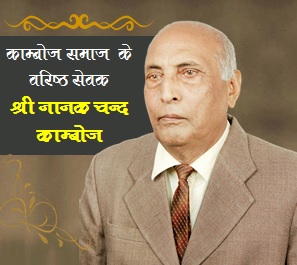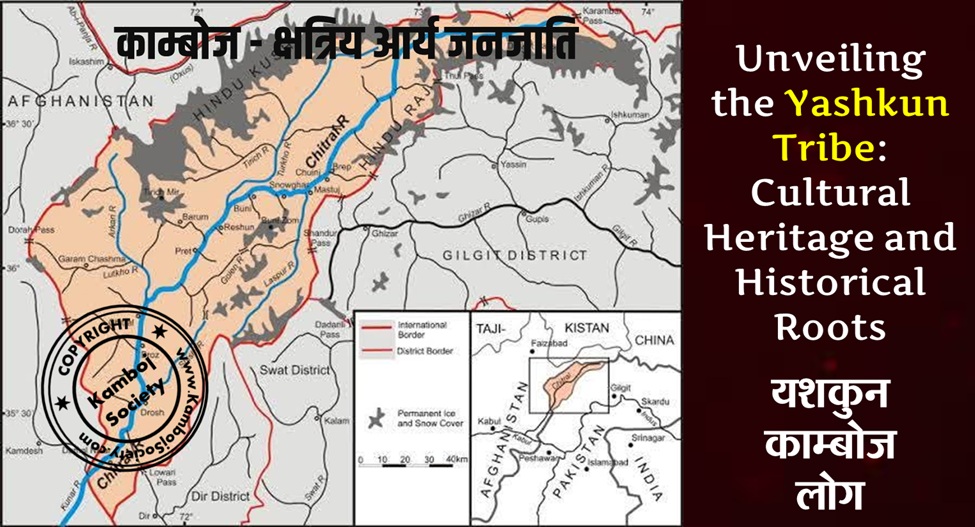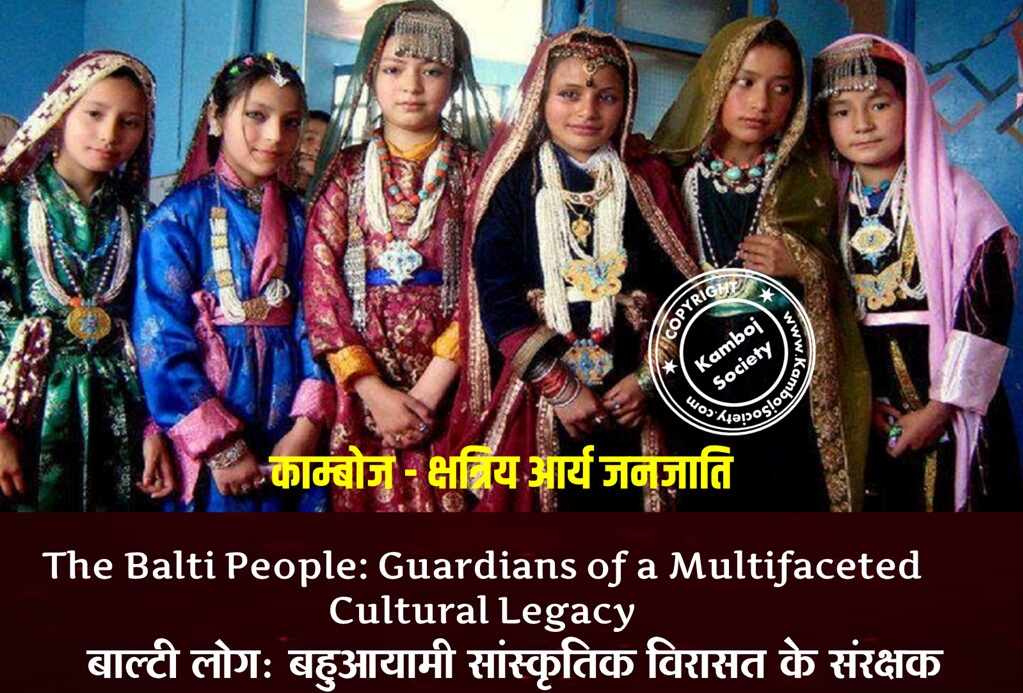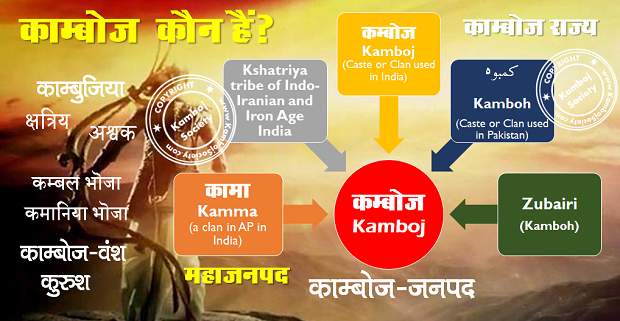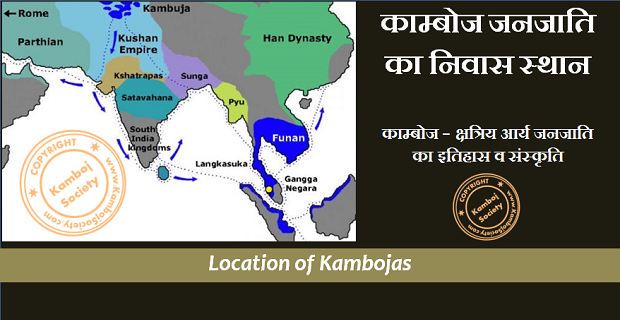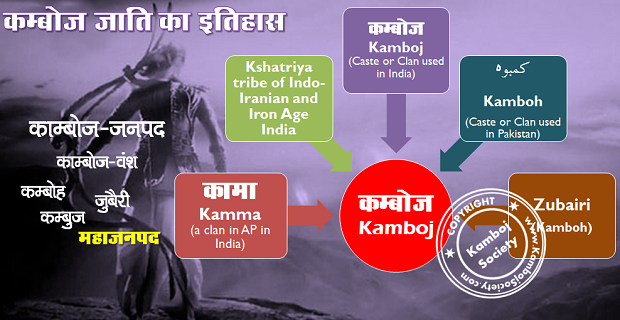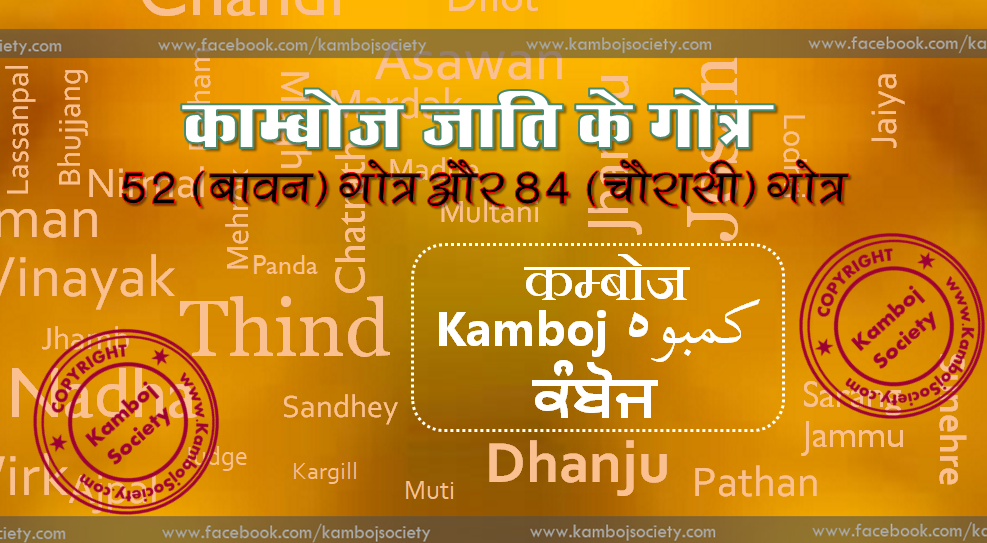Hinduism As a World Religion Down the Ages - Hindus around the World
Hinduism commands the adherence of approximately 850 million people in the world. Thus every 7th human being is a Hindu. This makes Hinduism the third largest religion in the world, after Christianity (approx. 2 billion) and Islam (1.3 billion). These figures certainly give the impression that Hinduism is a world religion. However, a look at the geographical spread of Hindus (Table 1) shows that the impression is deceptive:
(Source: Encyclopedia Brittannica)
|
Country |
Approximate percentage of total population Hindu |
Number of Hindus in Millions |
|
India |
82.0 |
800 |
|
Nepal |
89 |
19.69 |
|
Sri Lanka |
15 |
2.67 |
|
Bangladesh |
11 |
16.0 |
|
Bhutan |
20 |
0.17 |
|
Pakistan |
1.3 |
2.2 |
|
Malaysia |
7.1 |
1.2 |
|
Indonesia |
2.3 |
3.8 |
|
Singapore |
6.0 |
0.09 |
|
Vietnam |
- |
0.05 |
|
Hong Kong |
<1.0 |
0.04 |
|
Burma |
2.0 |
0.24 |
|
South Africa |
2.0 |
0.7 |
|
Mauritius |
50.6 |
0.58 |
|
Kenya, Uganda |
<1.0 |
0.2 |
|
Kuwait, Oman, UAE |
15.0 |
0.17 |
|
Fiji |
41.0 |
0.3 |
| Trinidad and Tobago30 |
24.0 |
0.36 |
|
Guyana29 |
38.0 |
0.25 |
|
Surinam30 |
30.0 |
0.1 |
|
Jamaica30 |
3.0 |
|
|
Canada |
0.5 |
0.22 |
|
USA |
0.4 |
1.0 |
|
U.K. |
0.5 |
0.4 |
|
Netherlands |
1.0 |
0.16 |
It is clear that more than 95% of all Hindus reside in India and approx. 98% in South Asia. Besides, Hindus in most countries outside South Asia are emigrants from India and other countries of the region. Only the Hindus of South Asia, Vietnam and Indonesia are indigenous. In contrast, Christians dominate countries of the entire Western hemisphere, Europe, Oceania and southern half of the African Continent while Islam dominates in scores of countries in North Africa, West Asia besides Albania in Europe, Pakistan, Afghanistan, Maldives and Bangladesh in South Asia and Malaysia, Brunei and Indonesia in the Far East. The two predominant reasons for the geographical confinement of Hinduism are:
-
Traditionally, Hinduism is a non-proselytizing religion i.e., Hindus do not normally convert people of other faiths to their own. Forcible conversions have never been carried (except in a solitary instance around the Independence of India) and even peaceful methods have not been employed on any significant scale. This contrasts totally with the record of Semitic faiths like Christianity and Islam.
-
In the last few centuries, Hindus in many countries have suffered severe reverses due to absorption by or conversion to other religions or massacres and persecution leading to migrations to India or conversion to other faiths.
It is pertinent to point out, however, that several fundamental tenets of Hinduism have been accepted whole heartedly by Non-Hindus all over the world. For instance, one in four residents of the United States believes in the doctrine of rebirth. The Hindu-Buddhist spiritual discipline of Yoga has been gaining popularity in the West for quite some time and has even been granted recognition by certain churches.
1.2 Historical Decline of Indigenous Hindu Communities
As stated earlier, Hinduism has suffered serious reverses in the last few centuries and this has lead to the displacement or extinction of several indigenous Hindu communities. Following is a brief account of the same in different regions of the world (the adversities faced by emigrant Hindu communities like in Surinam and Fiji are beyond the scope of this section):
1. Sinkiang (China): This region, referred to as ‘Uttara-Kuru' in Hindu scriptures, was inhabited by an Indo- Aryan people called Tocharians in remote antiquity. The Tocharians adhered to Abhidhamma Buddhism and Saivite forms of Hinduism before the onslaught of Mongol tribes from the East and the Arabs later. As a result, the Tocharians simply disappeared or were absorbed by the invading peoples. According to Indian traditions, the Shakadvipee and
Kamboj Brahmins residing in Bikaner, Ghaziabad and several other parts or North India are descendants of the Tocharians who fled to India1.2. The Middle East: Ancient Indian texts refer to Caspian Sea as Kashyapa Sagar and the Black Stone at Kaaba, Mecca (revered by Muslims) is referred to as a ‘Sivalinga' ( a Hindu icon representing Lord Siva) by a Hindu text ‘Bhavisyat Purana'. This could demonstrate that Indian merchants traveled often to these regions for carrying on trade. Ruins of Hindu temples are encountered in Coastal Iran, Baku (Azerbaijan) and Iraq. Historical records mention that fanatical mobs led by St. Gregory massacred the tiny emigrant Hindu merchant community in what is now Iraq, and smashed the temples and the idols therein2.
3. Afghanistan: Referred to as Gandhara and Vahlika in ancient Hindu-Buddhist scriptures, Hinduism (Saivite) and Buddhism (Mahayana) were the dominant faiths of the ancestors of present day Pathans inhabiting the Eastern and Southern parts of Afghanistan, before the advent of Islam. Around 654 C.E., Arab forces started attacking the Hindu Kingdoms of Kabul and Zabul ruled by the Shahiya kings. The Pathans resisted for 2 centuries before they were overwhelmed and forcibly converted to Islam3. So great was the massacre of Hindus that the local mountain range was renamed as ‘Hindu Kush' meaning ‘Hindu slaughter'4. With the fall of the communist regime in 1980's and after demolition of the Babri Masjid in India on December 6, 1992, the 75000 Hindu minority, mainly resident in Kabul, Jalalabad and Kandhar, was targeted selectively and their religious sites were descecrated15. They fled en-masse to cities like Delhi in India, where they are settled now. Several modern day Indian Hindu communities like the Sehgals are descendent of Afghan Hindus who fled Islamic persecution in Afghanistan several centuries ago. The Afghan Hindus have set up a website13, to highlight their situation.
4. Kashmir (India and Pakistan): This region is referred to as Kashmir and Kashyapasara in Hindu texts like the Nilamata Purana and was the seat of Mahayana Buddhism, Vedic Hinduism and Pratyabijna school of Hindu philosophy. Kashmir was regarded as a cradle of Hindu scholarship till as late as the 13th Century C.E. For instance, the Moorish traveler Al-Beruni, who sojourned in India, states in his memoirs5- "The Hindus have inveterate hatred for Muslims for the forces of Islam have utterly ruined the prosperity of Hindustan. The Hindus have been scattered like atoms of dust and their sciences have retreated to far off places like Kashmir, Benares and the South." The large scale massacres and forcible conversions of Hindus, burning of Hindu scriptures, destruction of temples by the subsequent Muslim rulers of the region have been documented vividly6,7 and are being left out. In modern times, the possession of Kashmir has been a major bone of contention between India and Pakistan ever since the two countries were partitioned from erstwhile British India in 1947 C.E. At that time, encouraged by Pakistan, the fanatically Muslim Pathan, Afridi and Chitrali tribesmen invaded the Hunza, Balistan, Gilgit, Ladakh, Poonch, Rajouri, Mirpur and Muzaffarabad regions of Jammu and Kashmir and let loose a reign of terror9. The genocide of the 20% minority of Hindus in these regions was total. For instance, the 100,000 strong proud Hindu Vaish community of Mirpur and Poonch areas was massacred, and their women-folk were sold as slaves in cities of Pakistan. More recently, in the last 15 years, terrorism in the Kashmir valley, partly fueled by Islamic fundamentalism, has lead to massacres of the Hindus in the valley. Almost the entire Kashmiri Hindu community (300,000) has fled to Jammu, Delhi and other parts North India to escape the wrath of Islamic terrorists. Members of this erudite and cultured community have set up websites to highlight their plight 14. In this year alone, the Kashmiri militants have killed approximately 150 members of this minority in parts of Kashmir- 29 were killed in the village of Barankot on April 18, 1998, for their refusal to convert to Islam8.
5. Pakistan: Pakistan was a Hindu country till the invasion of Sindh by Arabs in 712 C.E. and of Punjab later on by Turks and Afghan Muslims. Thereafter, barring brief periods, Hindus of the region suffered violent bouts of persecution and discrimination at the hands of their Muslim rulers. Hoards of Muslims Sufis also descended from Iran and Central Asia to preach and propagate Islam while the practice of Hindu customs and study of Hindu texts was abolished. Consequently, millions of Hindus were either killed for refusal to convert to Islam, or converted (either under duress, or due to their own will to escape the disabilities of the Hindu caste system, or to escape crippling Jaziyah tax imposed by Muslim rulers on Hindus or to acquire material advantages in the Muslim state), or fled to other parts of India (for instance, the Arora community of N. India is from Aror- the ancient capital of Upper Sindh)26. It is well known that the Muslim majority areas of India were carved out from British India to form Pakistan. The country was comprised of two wings- West Pakistan (modern Pakistan) and East Pakistan (Bangladesh). The word Pakistan means "Land of the Pure"- implying that the founders of Pakistan established an Islamic state for pure Muslims from India dominated by ‘impure' non-Muslims. Hindus constituted 11% of the population of Pakistan (28% in Sindh, 11% in West Punjab, 7% in N.W.F.P. and 8% in Baluchistan) in 1946 C.E. when large scale massacres of Hindus started10,11. The Hindu community fled en-masse from Punjab and N.W.F.P. and later from Sindh as a result of which, they are now a tiny minority of 1.3% there. Most Pakistani Hindus now live in the remote and barren parts of the province of Sindh, where they form a 6% minority. They are not even the largest minority in Pakistan- the Christians form the largest minority (1.5%). daily persecution of the hapless Hindu minority continues 12,13 as a result of which migration to India and conversion to Islam in Pakistan under duress is still in progress. The Pakistani Hindus have set up a web-site15 that is worth visiting.
6. Bangladesh: Islam spread mainly through peaceful conversion of the natives by active Muslim Sufis and Pirs like Suhrawardy of Sylhet but persecution of Hindus leading to their massacres, destruction of temples etc. were not uncommon. To start with, Hinduism was not firmly established in most parts of Bangladesh when Islam arrived. Most inhabitants followed a mixture of animist, tantric Buddhism and primeval Hindu beliefs. In 1947 C.E., when East Pakistan was formed, Hindus constituted 34% of the population there but relentless persecution and Govt. triggered communal rioting and massacres of Hindus started soon and millions of Hindus migrated to India or converted to Islam under duress16,17. In 1971 C.E., the Bengalis started a war of Independence from West Pakistan. The West Pakistani dominated army of Pakistan retaliated brutally. Hindus were targeted in particular18. About 3.0 million Bengalis (including 2.4 million Hindus) were massacred. About 10 million Bengalis (of which 8 million were Hindus) fled to India. After the establishment of Bangladesh, the Hindus there (already down from 34% to 16%) heaved a sigh of relief but their hopes were dashed soon after when Bangladesh was declared as an Islamic nation. A series of discriminatory acts have been passed19 by the Bangladeshi Govt. to the disadvantage of Hindus and daily suppression of Hindus by their Muslim neighbors continues. The plight of Bengali Hindus is poignantly narrated in a semi-fictitious book "Shame20"
by Taslima Nasreen- a Bangladeshi Muslim. As a result, she drew a fatwah ordering her death from the Muslim clergy of Bangladesh. The author now lives in Sweden under asylum. After the demolition of the Babri Mosque in India in Dec. 1992, fanatical Muslim mobs went on a rampage in Bangladesh, destroying 200 temples, killing 2000 Hindus and raping several 1000 Hindu women 21. In September-October 1997, the Durga Puja celebrations of Hindus were attacked by Muslim youth all over the country in about 100 places. Hindus were demanded to pay the Jaziyah tax for ‘practicing pagan customs in a Muslim country.'22 Due to continued persecution, the % of Hindus has dwindled to 11% and some estimate it to be as low as 8% now.7. Indonesia: This country was once the seat of powerful Hindu empires like the Majhapit in the island of Java and Sri Vijaya in the island of Sumatra. Indonesians believe that Hindu culture was brought to Indonesia by Sage Agastya- who is a legendary Sage in the Hindu tradition and is credited with spreading Vedic Hindu culture south of the Vindhya mountain range in Central India. The belief of Indonesians might be apocryphal, but evidence of practice of Hinduism as early as 4th Century C.E. in parts of Indonesia is known from inscriptions. In the early 15th Century C.E., Muslim traders from India and elsewhere and Muslim Holy men called Sufis carried the message of Islam to Sumatra and thence to other islands of the archipelago. Large numbers of Indonesians peacefully converted to Islam and several petty rulers of islands in the region too accepted Islam for commercial reasons. However, the rulers and the population of the Majhapit kingdom on Java resisted, leading to protracted warfare between Muslim Indonesians and the Majhapit kingdom. Occasionally, Hindus in the Muslim ruled areas suffered persecution but such instances were rare23. The boundaries of the kingdom shrunk towards east and eventually the royal family fled to the adjoining island of Bali, where Hinduism is still the religion of masses. Hindus are also found in large numbers in the adjacent island of Lombok and also in the eastern shores of Java and I have personally witnessed their festivities and customs during my visit to Indonesia in March-April 1996. Soon after the advent of Islam in Indonesia, European powers like the Dutch and the Portuguese became rulers of Indonesia and checked the cultural Islamization of Indonesia as a result of which, despite being overwhelmingly Muslim (86%), Indonesians still adhere to their pre-Islamic Hindu culture. The Javanese, especially are called the ‘Abangan' (easy going) Muslims. Thus, the Javanese still have Hindu names, enact Hindu epics like the Ramayana. A lot of their greetings and customs are distinctly Hindu, as known from my personal experience with my Javanese friends. The emblem of the National Airlines of Indonesia is the bird Garuda- the mount of the Hindu deity Lord Vishnu. Hinduism is one of the five officially recognized religions in Indonesia (the other being Confucianism, Christianity, Islam and Buddhism). The Hindu New Year is a national holiday in Indonesia. In recent decades, Indonesian Muslims have targeted members of the predominantly Christian Chinese minority and Christian24 Indonesians with violent attacks but the Hindus have not been molested. Approximately 500000 members of the animist Tengger community in Eastern Java have embraced Hinduism25 in the last three decades while 2 million have opted for Christianity.
8. South East Asia: Hinduism and Buddhism reached Thailand, Laos, Vietnam, Kampuchea and Burma simultaneously and there was a fusion of these two sister religions there, with the Buddhist element generally dominating. The largest Hindu temple in the world (Angkor Wat) is found in Kampuchea. By and large, Hindu practices have been absorbed peacefully into Buddhism in the region and distinctly Hindu customs are employed only when there is no Buddhist parallel (like the coronation ceremonies of Thai kings). These ceremonies are performed by descendants of Brahmin priests who were invited to the region by local kings several centuries back. This was learnt by during personal visits to these countries in the year 1986.
9. India: Indians were referred to as ‘Hindus' in ancient times and the two terms were fairly synonymous. However, large parts of the country passed under Islamic rule and under subsequently under Portuguese, French, Dutch and British rule. Millions of Hindus were converted to Islam and Christianity till, by 1947 C.E. approximately 25% and 1.5% of the population of the Indian Subcontinent had converted to Islam and Christianity respectively. While Hindus converted to other religions, they themselves refused to accept any converts. Thus, most indigenous Muslims26 and Christians are descended from Hindu and Buddhist Indian ancestors. We may summarize the following causes for the conversion of Hindus to Islam and Christianity:
a. Hindu Caste System: The social structure of the Hindu society put some communities/castes at a severe disadvantage in all temporal matters. Islam and Christianity offered these communities social equality and so several Low Caste Hindus and tribals left their ancestral beliefs. For instance, the socially inferior Lohana Rajputs of Bahawalpur (now in Pakistan) converted to Islam when the Muslim Sufi Farid offered them sops for converting to Islam. About 80% Christians in India have Low Caste or Tribal origins.
b. Forcible conversions: This was an important factor in the spread of Islam in South Asia. Often, the invading Muslims offered a choice between Islam and death to the inhabitants of subjugated Hindu areas31. The stories of cruelty and barbarianism of Islamic rulers are folklore among the Hindu masses of India. Similarly, in the Portuguese ruled part of Goa32, Catholicism was often forced upon the Hindus and Muslims there. It is estimated that the 8 century long Islamic rule witnessed the massacre of 80 million Hindus26. This is the root cause of the on-going Hindu-Muslim fued in South Asia.
c. Anhilation of symbols of Hinduism: Islamic rule in India saw a widespread destruction of Hindu places of worship27, burning of libraries (Eg. Vikramshila in 1200 C.E.), burning of Hindu scriptures (Eg. Emperor Aurangzeb ordered destruction of Hindu scriptures in Thatta in Sindh and in Multan in West Punjab), selective massacres of Hindu priestly class; prohibition of Hindu customs and rituals; desecration of rivers, ponds etc. held sacred by Hindus (for instance, Timur threw slaughtered cows into River Ganga at Hardwar and massacred the entire Hindu population of Delhi, while sparing the Muslim-Sayyad quater of the city). All these acts demoralized the leaderless Hindus further and drove them to accept the faith of the victorious- Islam.
d. Worldy allures offered to converts: Often Hindus found it easier to rise in the Muslim run administration system by converting to Islam since the Muslim rulers of India by and large favored their co-relgionists for the top positions. Hindu traders were often charged higher taxes than their muslim counterparts. Most Muslim rulers exacted the crippling Jaziya tax from hapless Hindu masses to keep them in poverty. Hindus often had to pay taxes to practice various aspects of their religion (Eg. Temple entry tax, pilgrimage tax). Some Muslim rulers pardoned the crimes of Hindu criminals if they converted to Islam. All these measures forced several Hindus to convert to Islam.
e. Unfair Laws against Hindus: While Hindus could convert to Islam and still retain their inheritance, the reverse was not allowed. Hindus were not allowed to marry Muslim women unless they converted to Islam while Muslims could easily marry Hindu women. Emperor Jehangir26 (1605-1628 C.E.) ordered approx. 400 Hindu families of Northwest Punjab to convert to Islam since their men had married Muslim women. Some Muslim rulers insulted/decapacitated Hindus by preventing them from carrying arms or riding elephants etc.
f. Higher growth rate of Muslim Population: This was due to the greater fertility rate of muslim women, prevelance of widow remarraige amongst Muslims, polygamy and continuous influx of Muslims from Persia, Central Asia etc. into India.
g. Superstitious beliefs of Hindus: As a result of nightmarish experiences that Hindus had with Muslims and the Portuguese, Hindu masses reduced social intercourse with Muslims and Christians. Those Hindus, who interacted with Muslims or Christians, were osctracised by the Hindu society and often excommunicated. For instance, the court musicians of Moghul Emperor Muhammad Shah ‘Rangila', who were Brahmins, faced great ostracism from Hindus and so were forced to convert to Islam. (Their descendants are the famous Dhrupad singers- Dagar brothers). Similary, an entire community of Hindus were declared outcastes by neighbouring Hindus in Vasai (Thane district of Maharasthra) after they accidently drank water from wells that had been ‘polluted' by pieces of bread that had been thrown into them intentionally by the Portuguese! Hindus also stopped admitting non-Hindus into Hinduism and even to this day, many Hindus oppose the idea of converting non-Hindus to Hinduism. Thus, conversion was a one way traffic from Hinduism to other faiths.
1.3 Emigrant Hindus- The Hindu Diaspora:
a. Oceania: Till recently, Australia and New Zealand followed a ‘white only' policy which excluded most Asians from the continent. Only recently have the two countries relaxed immigration rules to allow more Asians including Indians to emigrate. In case of Indians, it is widely known that Indian Christians are favored over non -Christians for immigration. An estimated 100000 Indians are now settled in Australia and presumably most of them are Hindus. Most Indians here are recent arrivals and hail from affluent sections of the Indian society. They still adhere to the same forms of Hinduism as are practiced in India, without of course the facilities of Hindu temples and priesthood. It is too early for then to ‘Australianize' their Hindu beliefs. The only island with any significant Hindu population is Fiji. Indians are approximately 46% of the total population and accordingly, Hindus could account for a little less than 40% of all inhabitants. Indians/Hindus here are essentially descendants of the rebellious ‘Purubiya' (of Eastern Uttar Pradesh and Bihar regions of India) settlers who were taken from India in large numbers more than a century ago to work in sugar plantations there. Due to their cultural origin, Fijian Hindus study the ‘Ramacharitamanas' and devotional texts on Lord Hanuman with great faith, put saffron flags atop their houses very often and celebrate Hindu festivals like Holi, Vijayadashmi, Diwali in the North Indian manner. A few years back, the pro-Christian forces lead by General Rabuka, who is a native Fijian, captured control of the island and put several humiliating restrictions on the practice of religious beliefs of Hindus. However, he has since been succeeded by a Prime Minister of Indian origin, who has removed these restrictions. Nevertheless, this episode has shaken the confidence of Hindus there and has made them realize the need to organize in a better manner to thwart any such future incidents.
b. Europe: Barring Britain and Netherlands, no other European country has a sizeable Hindu community. Hindus in Great Britain number about 400 000 or approximately 0.7% of the population. They are mainly Gujaratis and Punjabis who emigrated either directly from India or from erstwhile British colonies like Kenya, Nigeria, Guyana. About two decades back, the Ugandan dictator Idi Amin singled out the Indian ccommunity (mainly Gujarati) for harassment as a result of which 65000 of them fled Uganda, mainly for England. The Hindus of Britain practice their faith very actively and have established a chain of beautiful temples all over the country. The Swaminarayan temple at Neisden (in Greater London) is a beautiful marble edifice constructed recently and has already been christianed as the ‘Taj Mahal of England.' British Hindus are also well organized as is evident from their collective protest against actions perceived by the community as insulting to or discriminating against Hindu sentiments. For instance, approximately a decade back, about 10000 Hindus marched in protest in London when permission was refused for construction of a Hindu temple at the outskirts of London on the grounds that the temple architecture violated local architectural traditions. In 1989, the ‘Shila Pujan' ceremony advocated by the Vishwa Hindu Parishad- a Hindu organization that has been clamouring for the construction of a Temple at Ramajnmabhoomi at Ayodhya, drew widespread support- so much so that the English mayor of Kent- a town with a large Indian population, presided over the ceremony34. Netherlands too has a large Hindu population, mainly people who fled from Surinam in the 1960's to escape the Creole perpetrated atrocities. It is of interest to note that 14% of population of East Europe is Gypsy who were originally Hindus of Afghanistan and Punjab (in India and Pakistan) enslaved by invading Islamic hordes and carried off to Central Asia and beyond. In course of time, the Gypsies have become Christians to survive but still retain several vestiges of their Hindu/Indian past. The Lithuanians are another interesting community of Europe. They were the last European nation to adopt Christianity and so still retain several features of their Pagan cultural past. Lithuanian mythology has a lot in similarity with Vedic mythology and in addition to the now extinct Vedic Sanskrit (language of Hindu revelation), Lithuanian is the only ‘accented' language. Indian participants Surinder Attri and Arvind Ghosh recently participated in the International Pagan Conference at Lithuania and in personal communications to me, expressed amazement at the similarity between folk Lithuanian culture and Vedic beliefs. It appears that Lithuanians are also aware of their link with ancient Indian culture and are proud of it35. Europe also has distinguished centers of oriental/Hindu studies like Utrect (Netherlands), Helsinki (Finland), Berlin (Germany), Vienna (Austria) where oriental scholars continue to produce excellent works on Hindu culture and philosophy. As for indeginous Hindus, there are hardly any in Europe and most of them are Hare Krishnas. Native Italian Hindus recently petitioned the Italian Govt. for state recognition of Hinduism- a process that is expected to take approximately 15 years. Portugal too has a tiny Hindu minority emigrated from Goa. Portuguese Hindus have constructed a beautiful Hindu temple in the heart of Lisbon on land that has been donated by the Govt. of Portugal.
c. North America: Details of Hindu Diaspora in Canada and the United States will be covered in the next chapter. This subsection will deal mainly with the Hindu communities in the Caribbean Islands. Indians, predominantly Hindus, were introduced as indentured laborers in 1838 in British Guiana and later to Trinidad, Jamiaca, Grenada, St. Lucia, Martinique, Guadeloupe and Surinam. Right from the beginning, they had to face sustained attacks on their religions by aggressive Christian missionaries on one hand and state sponsored discrimination against Hindu religious practices on the other. Thus, Hindu marraige and cremation customs were not recognized and upon the death of a Hindu man, the state treated his widow as concubines and his children as bastards, especially in Jamaica and Grenanda. Lack of awareness of their own relgious beliefs, apathy of Hindu priests, lack of effective leadership in the Indian community and intermarraige with Christian creole majority caused enmasse conversion of Indians to Christianity and their absorption into mainstream communities in Jamaica and Grenada. In Guadeloupe though, the tiny Hindu minority has constructed several Hindu temples to keep its faith alive.
d. South America: Three countries in this continent have a sizeable Hindu population- Surinam, Guyana and Trinidad and Tobago. In Trinidad and Guyana, the Hindus suffered considerable erosion in their ranks but their greater numbers and the Hindu response lead by Arya Samaj has stopped the conversions and Hinduism is still the relgion of majority of immigrant Indians. In all countries barring Surinam, Hindus face some disability or the other in practicing their religion and are under constant Christian missionary propaganda and enticements. For instance, several Hindus have had their children converted to Christianity so that they could have the opportunity of a better school education. Surinamese Indians form 37% of the population of their country and 82% of them adhere to Hinduism. In Guyana, Indians are 53% of the population with Hinduism being the faith of 60% of them. All over the Carribean, immigrant Indians are descedent from Purubiya Hindus and so follow the Hindu customs of Gangetic Plains in varying degrees.
e. Africa: Before the United States took over a decade back, South Africa had the largest immigrant Indian community in the world. Immigrant Indians form about 3% of the total population of South Africa and so number approx. 1 million. They are concentrated in the eastern regions of Natal and Transvaal of the country. About 65% are Hindus, 15% Muslims and the rest Christians. Indian Christians are mainly Hindu converts who adopted their new faith in the first half of the century. These large scale conversions jolted the Hindu community of South Africa and Arya Samaj- an aggressive and reformist Hindu sect stepped in to stem the tide of defection from Hinduism. Since then, Hindus have consolidated themselves and conversions to Christinaity have ceased. Indian Hindus are mainly Gujaratis and Tamils and continue to follow their regional variations of Hinduism. Mauritius- an island in the Indian ocean has a 63% Indian majority of which 80% follow Hinduism. Hindus in Mauritius have been well organized from the start and wield considerable clout in political matters, with several successive Prime Ministers being of Indian Hindu origin. Mauritian Hindus still frequent the pilgrim centers of India, but have now established the 13th Saivite Jyotirling on the island, after the 12 in India. The conscecration ceremony was attended by the Mauritian Prime Minister Mr. Anirood Jaganaut (Aniruddha Jagannatha) and was preced by the emptying of pitchers of water from Holy rivers of India into a lake at the banks of which the temple was to be constructed. Arya Samaj is an important sect of Hindus on the island, but most Hindus follow the customs observed by Hindus of Eastern Uttar Pradesh and Bihar in India since their anscestors came from these areas. Several 1000 Indians also reside in the former British colonies of Kenya and Tanzania. Although they form less than 1% of the population of these countries, they have considerable economic clout and are a well respected minority. Again, Hindus there have a very restricted interaction with the locals and do not seek converts. Diwali is a national holiday in Kenya. During recent bomb blasts at the US Embassy at Daar-es-Salaam in Tanzania and Nairobi in Kenya, Hindu Students Councils of these countries were at the forefront in providing medical aid to the victims36.
f. Asia: Burma, Malaysia, Singapore, Sri Lanka, Indonesia and the Middle East have sizebale immigrant Hindu communities. The Indian/Hindu community of Burma is a legacy of the British rule when almost a million Indians (mostly Bengali) emigrated to Burma. However, when Burma obtained its freedom in 1948 C.E., most of them returned to India. Those still there often intermarry with local Burmese and there have been several cases of conversion to Buddhism37. Indians number approximately 10% of the population of Malaysia and 70% of them are Hindus. They mainly reside in the rubber plantations of the Penang province and are predominatly from the Coromandal coast of Tamil Nadu in India, from where the British took them a few decades back to work in the rubber plantations. There have been cases of friction between the Hindu minority and the indigenious Muslim community. In 1979 C.E., mobs of Malay muslims ran amuck plundering Hindu temples and smashing idols of Hindu deities38. In the beginning of this year also, there was a fear of a riot when 1500 Muslims attacked a newly built Hindu temple next to a mosque, complaining that the loud speakers of the Hindu temple were provocative. The Prime Minister of Malaysia (Mahathir Mohammad) had to step in to defuse the tension and ordered the relocation of the temple. Muslims are barely over 50% of the population in Malaysia and have yet declared it an Islamic state, putting mainly Buddhist Chinese and Hindu Indians at a disadvantage vis-a-vis ‘Bhumiputra' Muslim Malays. Singaporean Hindus too number 7% of the population of the Island and maintain close cultural and religious links with the parent Tamil Hindu community of India. There are several beautiful Hindu temples in Singapore and Hindus of the Island have also set up a beautiful website. Hindus emigrant from India form a double digit % of the population of several Arab countries like Kuwait, U.A.E., Oman, Yemen and so on. However, these countries are strictly Islamic nations and brook no competition from rival faiths. Cremation is disallowed in these countries and only the comparatively liberal states of Sharjah (one of the 7 Emirates of U.A.E) and Oman have allowed construction of one Hindu temple each. Saudi Arabia does not allow Hindus to worship icons even in the privacy of their homes in the country and has barred the entry of all Sikhs and all Hindus bearing the surname Singh".
References: Considerable help has been taken from information available on the web, in addition to books. Both are referenced below.- Pt. Udayavira Sastri; Samkhya Darsana ka Itihasa; Virjanand Vaidika Shodha Samsthana; Ghaziabad, India
- Sita Ram Goel; History of Hindu-Christian Encounters; Voice of India; Delhi, India; 1986
- Sita Ram Goel; Heroic Hindu Resistance to Islamic Invaders (654 A.D. to 1206 A.D.); Voice of India; Delhi; India
- Tawarikh-e-Hind
- Narendra Sehgal; Converted Kashmir: A Bitter Saga of Religious Conversion; Utpal Publications; Delhi; 1991 (Available on-line at Reference # 8.b)
- K. N. Pandit; Baharistan-I-Shahi: A Chronicle of Medieval Kashmir (An English Translation); Firma KLM Pvt. Ltd.; Calcutta; 1989 (Available on-line at Ref. # 8.b)
- Bal Raj Madhok; Kashmir- The Storm Centre of the World; A. Ghosh- Publisher; Houston; 1992
- Massacres of Sikhs and Hindus in West Pakistan; Sri Gurdwara Prabandhak Committee; Amritsar, India;
- Details personally heard from members of numerous migrants from West and East Pakistan now residing in Delhi (including my maternal grand-parents and my In-laws)
- Baljit Rai; Muslim Fundamentalism in the Indian Subcontinent; B. S. Publishers; Chandigarh, India; 1991
- S. K. Bhattacharya; Genocide in East Pakistan; A. Ghosh- Publisher; Houston; 1987
- Taslima Nasrin; Shame; Prometheus Books; New York; 1997
- Arvind Ghosh; Koran and Kafir; A. Ghosh-Publisher; Houston; 1994
- Ira Marvin Lapidus; A History of the Islamic Societies; Cambridge University Press; New York; 1988
- Robert W. Hefner; Hindu Javanese: Tengger Tradition and Islam; Princeton University Press; Princeton, New Jersey; 1985
- Kishori S. Lal; Indian Muslims- Who Are They? ; Voice of India; Delhi; 1992
- Ram Swarup, Arun Shourie, Jay Dubashi, Ssita Ram Goel, Harsh Narain; Hindu Temples- What Happened to Them? (Two Volumes); Voice of India; Delhi; 1997
- Kishori Saran Lal; Early Muslims in India; Aditya Prakashan; Delhi; 1984
- Dwarka Nath; A History of Indians in Guyana; Published by the author- 30 Crowther Road, South Norwood, London; 1970
- I. J. Bahadur Singh (Ed.); Indians in the Carribbean; Sterling Publishers Private Ltd.; New Delhi; 1986
- Margaret A. Gibson; Accomodation Without Assimilation; Cornell University Press; Ithaca, New York; 1988
- Titus; Islam in India and Pakistan
- A. Prilokar; Goa Inquisition; Voice of India; Delhi
- Hindu Vishwa; A VHP publication (annual); 1989 issue
- Emails from Sri Surinder Paul Attri- an Indian participant from the United States at the World Pagan Conference 98' at Vilnius, Lithuania
- Email received from the Hindu Students Council of Kenya
- Personal conversations with Mr. Sibal, an Indian importer of rice from Burma
- Collin Maine; The Dead Hand of Islam; The Australian Humanist Asscociation; Sydney; 1982
- Karen Isaksen Leornard; The South Asian Americans; Greenwood Press; Westport, CT; 1997
- Madhok, Balraj; What is a Hindu Rashtra?
- Chatterjee, Abhas Kumar; Concept of a Hindu Nation; Voice of India; Delhi
- Mazumdar, Shampa; " Sacred Spaces: Socio spatial adaptations of Hindu Migrants"; PhD dissertation; Northeastern University, Boston; 1995




